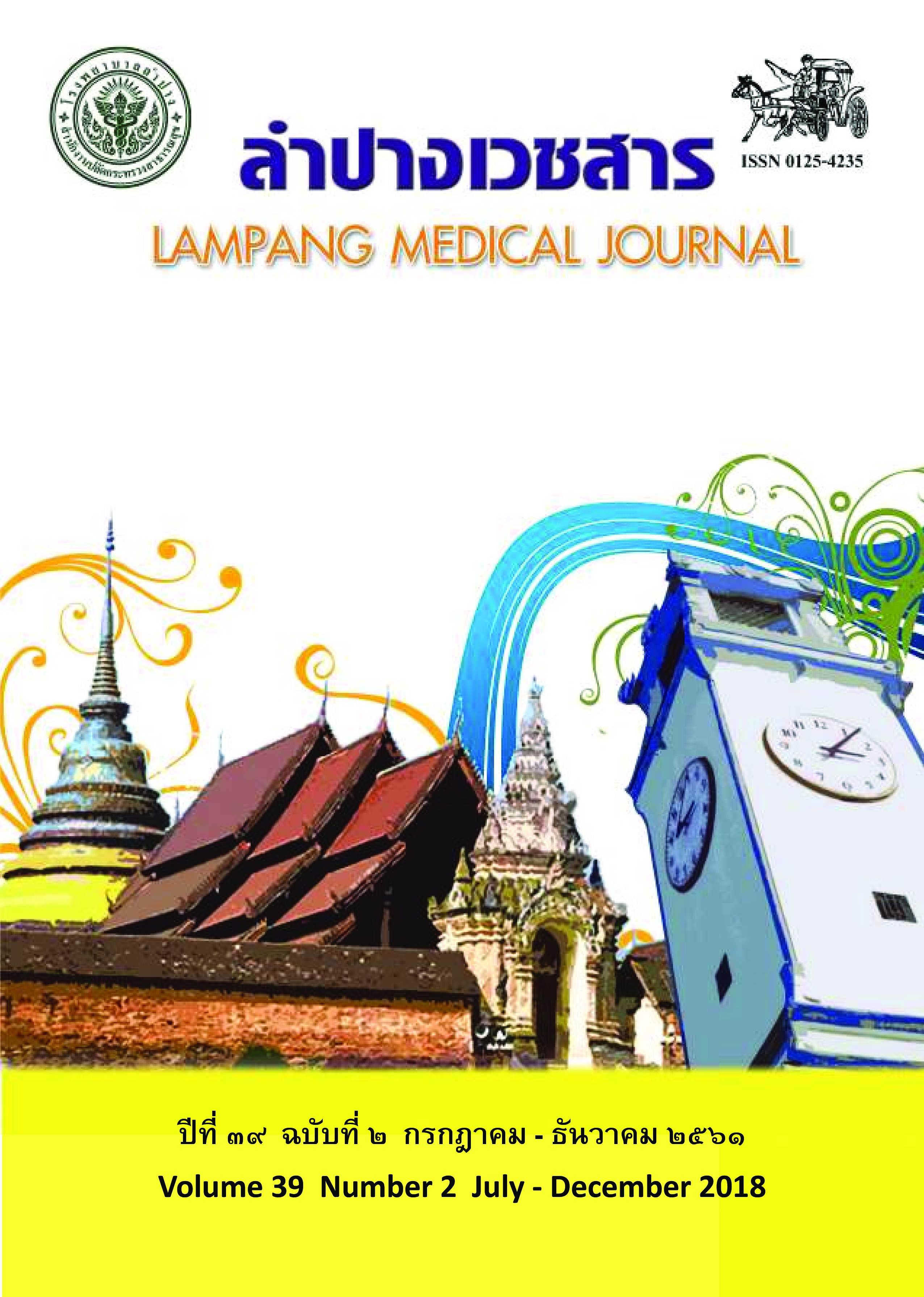Effectiveness of Adjustable Night Socks for Heel Pain Relief in Nurses at Vajira Hospital
Main Article Content
Abstract
Background: Heel pain is commonly found in nurses who walk and stand for prolonged periods during their working hours. Objective: To determine the effectiveness of adjustable night socks for heel pain relief in nurses and their satisfaction with usage.
Material and method: A quasi-experimental study, one group pretest-posttest design, was conducted among 40 female nurses with moderate heel pain and working on wards of Vajira Hospital. All participants wore the adjustable night socks to maintain the ankle dorsiflexion during the sleep for 4 weeks. Demographic data and satisfaction scores were analyzed by using descriptive statistics. Pain scores before and after wearing the socks were compared by using a paired t-test
Results: The mean age was 31.6 years (range 26-40) and the mean body mass index was 20.6 ± 0.9 kg/sqm (range 19.4-22.2). The mean pain scores were significantly decreased after wearing the socks (4.4 ± 0.7 points vs 3.1 ± 0.8 points, p<0.001). The mean satisfaction score was high (4.1 out of 5 points).
Conclusion: The adjustable night socks were effective in reducing heel pain in the participated
nurses after 4 weeks of treatment with a high satisfaction level.
Article Details
บทความที่ส่งมาลงพิมพ์ต้องไม่เคยพิมพ์หรือกำลังได้รับการพิจารณาตีพิมพ์ในวารสารอื่น เนื้อหาในบทความต้องเป็นผลงานของผู้นิพนธ์เอง ไม่ได้ลอกเลียนหรือตัดทอนจากบทความอื่น โดยไม่ได้รับอนุญาตหรือไม่ได้อ้างอิงอย่างเหมาะสม การแก้ไขหรือให้ข้อมูลเพิ่มเติมแก่กองบรรณาธิการ จะต้องเสร็จสิ้นเป็นที่เรียบร้อยก่อนจะได้รับพิจารณาตีพิมพ์ และบทความที่ตีพิมพ์แล้วเป็นสมบัติ ของลำปางเวชสาร
References
2. Hills AP, Hennig EM, McDonald M, Bar-Or O. Plantar pressure differences between obese and non-obese adults: a biomechanical analysis. Int J Obes Relat Metab Disord 2001;25(11):1674-9.
3. พรรณราย ช่วยพัฒน์, วิภาวรรณ ลีลาส?ำราญ, สุวิชา เตชะภูวภัทร. การศึกษาเปรียบเทียบผลการใช้แผ่นกระจายน?้ำหนักกระดูกเท้าส่วนหน้าแบบติดในถุงเท้าบางและแบบติดในรองเท้าในผู้ป่วยที่มีอาการปวดใต้เนินกระดูกฝ่าเท้าปฐมภูมิ. เวชศาสตร์ฟื้นฟูสาร 2555;22(3):73-9.
4. กชกร อนุราช, กุลภา ศรีสวัสดิ์. อาการปวดเท้าของพยาบาลโรงพยาบาลศิริราช. เวชศาสตร์ฟื้นฟูสาร 2548;15(2):70-8.
5. Martin JE, Hosch, JC, Goforth WP, Murff RT, Lynch DM, Odom RD. Mechanical treatment of plantar fasciitis. a prospective study. J Am Podiatr Med Assoc 2001;91(2):55-62.
6. Young CC, Rutherford DS, Niedfeldt MW. Treatment of plantar fasciitis. Am Fam Physician 2001;63(3):467-74.
7. Powell M, Post WR, Keener J, Wearden S. Effective treatment of chronic plantar fasciitis with dorsiflexion night splints: a crossover prospective randomized outcome study. Foot Ankle Int 1998;19:10-8.
8. Batt ME, Tanji JL, Skattum N. Plantar fasciitis: a prospective randomized clinical trial of the tension night splint. Clin J Sports Med 1996;6:158-62.
9. Martin RL, Irrgang JJ, Conti SF. Outcome study of subjects with insertional plantar fasciitis. Foot Ankle Int 1998;19(12):803-11.
10. Lee WC, Wong WY, Kung E, Leung AK. Effectiveness of adjustable dorsiflexion night splint in combination with accommodative foot orthosis on plantar fasciitis. J Rehabil Res Dev 2012;49(10):1557-64.


